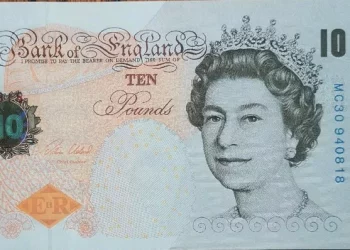The Pound Sterling (GBP) is under selling pressure as it attempts to extend its recovery above the round-level resistance of 1.2700 against the US Dollar (USD) during Tuesday’s London session. The GBP/USD pair has edged down as the US Dollar rebounded after a modest correction from a six-week high. The US Dollar Index (DXY), which measures the greenback’s value against six major currencies, remains above 105.00, with Federal Reserve (Fed) officials advocating for only one interest rate cut this year.
Fed policymakers are cautious about inflation, preferring to see a sustained decline before considering further rate cuts. Their concern over a potential reacceleration in price pressures is driven by fears of premature rate reductions, despite progress in disinflation after a stall in the first quarter.
Philadelphia Fed Bank President Patrick Harker emphasized on Monday the need to keep rates unchanged to maintain downward pressure on inflation in sectors like housing and services, including auto insurance and repairs. Harker foresees one rate cut this year, contingent on economic conditions, as reported by Reuters.
In economic developments, all eyes are on the US Retail Sales data for May, scheduled for release at 12:30 GMT. This data, a close indicator of consumer spending and inflation trends, is expected to show a 0.3% increase after a flat reading in April.
Pound Sterling Retreats as US Dollar Holds Gains Ahead of US Retail Sales Data
The Pound Sterling shows mixed performance against major currencies amid uncertainty ahead of the United Kingdom (UK) Consumer Price Index (CPI) data for May, set for release on Wednesday. This inflation data is crucial for determining when the Bank of England (BoE) might start reducing interest rates.
The UK CPI report is expected to show a decline in headline inflation to the BoE’s target of 2% from April’s 2.3%. Core CPI, excluding volatile food and energy prices, is projected to decelerate to 3.5% from 3.9%. However, monthly headline inflation is expected to grow by 0.4% from 0.3% in April.
Service sector inflation, driven by wage growth, remains a key factor influencing the inflation path towards the central bank’s 2% target. Average Earnings data excluding bonuses for the three months ending in April showed a steady growth of 6.0%, a pace significantly higher than required to bring core inflation down to 2%.
This week, the Pound Sterling is likely to remain highly volatile, with the BoE’s interest rate policy decision following the inflation data on Thursday. The BoE is widely anticipated to keep interest rates unchanged at 5.25% for the seventh consecutive time. Investors will be seeking cues on the future rate-cut timeframe, with a 57% chance of another BoE rate hold in August, according to Reuters.
Pound Sterling Supported Above 50-Day EMA
The Pound Sterling struggles to extend its recovery above the critical resistance of 1.2700 against the US Dollar. The GBP/USD pair faces selling pressure near the 20-day Exponential Moving Average (EMA), indicating an uncertain near-term trend. The 50-day EMA near 1.2670 is providing major support for the Pound Sterling bulls.
Currently, the Cable holds the 61.8% Fibonacci retracement support (calculated from the March 8 high of 1.2900 to the April 22 low of 1.2300) at 1.2667. The 14-period Relative Strength Index (RSI) has fallen back into the 40.00-60.00 range, suggesting that the upside momentum has diminished.
Related Topics:



























